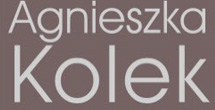
The Dialogue Project
Have you ever been to a place that you never left... Dialogue with L. Performance, The Nunnery 2009
Artist about the project Dialogue with L.B.A.
The Project Dialogue with L.B.A. consists of three dialogues between the artist Agnieszka Kolek and three women over a period of 18 months. The participating women have all worked with the artist previously on a number of drawings with different results.
The work was process led: relationships with individual women triggered my investigations and I focused on the nature and dynamic of the exchange during the work in the studio. In the past, this process led to a series of drawings; in the project Dialogue with L.B.A. it took the form of a book.
Dialogue with L.B.A.
began with a questioning of my own practice as an artist and the role
of each subject I draw in shaping that practice. The project has raised
wider questions about the role of others in an individual's life. I am
interested in individual's consciousness and perception of the world and
their place in it; whether we are shaping it or we are subject to and
shaped by others' influences.
The
material I gathered through the process of interacting with my three
subjects has allowed me to take specific elements and continue to work
through them with the audience. I use different media depending on which
part of the work I choose to investigate further. It has taken a form of
an installation and a sound piece. At times I have used a performative aspect
of an artist being present and acting as a medium.
The
process was unpredictable and moved the emphasis from the achievement of
artwork acting as a perfect product to being watchful of the process
that shapes it. The exchange with the subject has been continuing even if the
initial inquiry has taken shape, for instance a drawing or a book.
It may be transformed over a period of time or it may be a hidden
undercurrent that only re-emerges at a point of intense interaction.
Dialogue with L.B.A.
Dialogue with L.B.A.
The Project Dialogue with L.B.A. consists of three dialogues between the artist Agnieszka Kolek and three women over a period of 18 months. The participating women have all worked with the artist previously on a number of drawings with different results.
The three dialogues explore the nature of human relationships in the artist's studio and beyond. Each one was started with an open-ended idea of what would be the nature of the exchange. This approach has resulted in three different themes that over a period of time have begun to connect.
Dialogue with L. focuses on the "Imaginary City" where for the artist it is Paris - and for L. it is Incheon, South Korea. The themes and ideas that occurred in the dialogue: the phantasy of an imaginary place, the subconscious mechanism of dealing with traumatic experiences, the investigation of its components, the trust and the boundaries between the artist and L.
Dialogue with B. "..." focuses on the process of exchange between two women. It touches the dream of being the other, how the exchange between supposedly different individuals works. It leaves it open to question how far the other can lead someone else's life.
If I have not love...
2min 11sec, audio recording
The last one, Dialogue with A. attempts to look closely at "Love". It questions our hidden phantasy of perfect love, the intrictae nature of attraction, the period of mourning, the process of breaking through. It asks whether we have any power over it at all. This dialogue more than the others questions the role of an artist, the role of the other in an individual's life. How close can you get? How much can you understand and should you continue to ask to understand?
Loved so much that you wished to disappear
15min 23 sec, audio recording
The last part forms an appendix and shows the artist tracing her own life story from the point at which things could have been drastically altered. The autobiographical project How to become an artist touches on personal narratives that are passed on, told, retold, worked on and slowly become a literary form in their own right. They help to organize the world, to explain and normalize elements that are painful and hard to bear. How much is our world view shaped by these early narratives? Can we trust them? Are we able to see beyond them?




